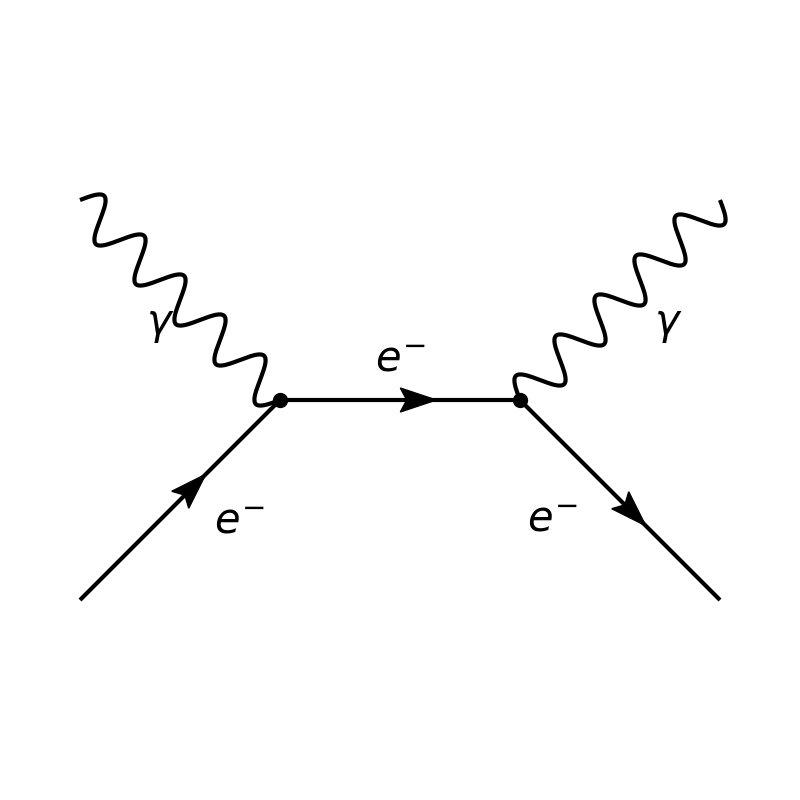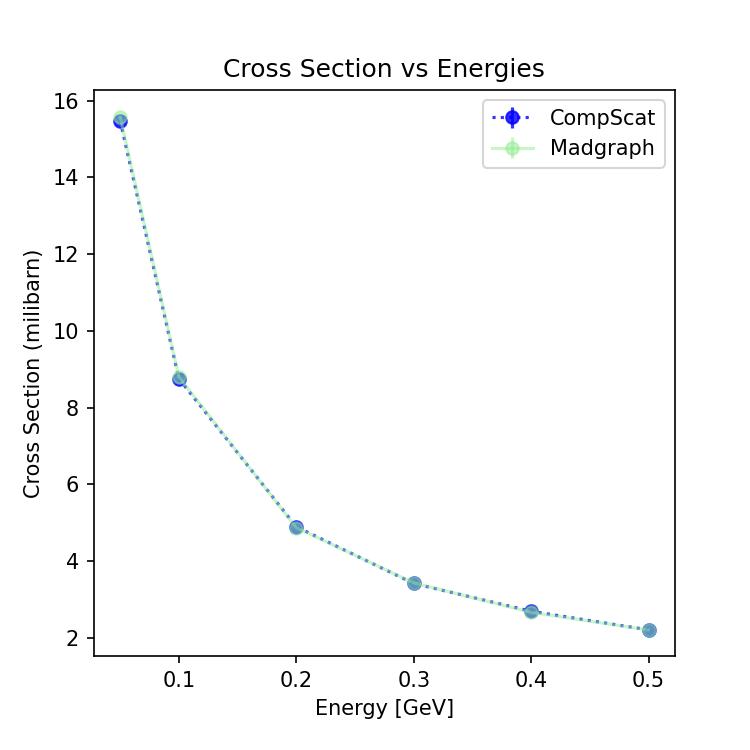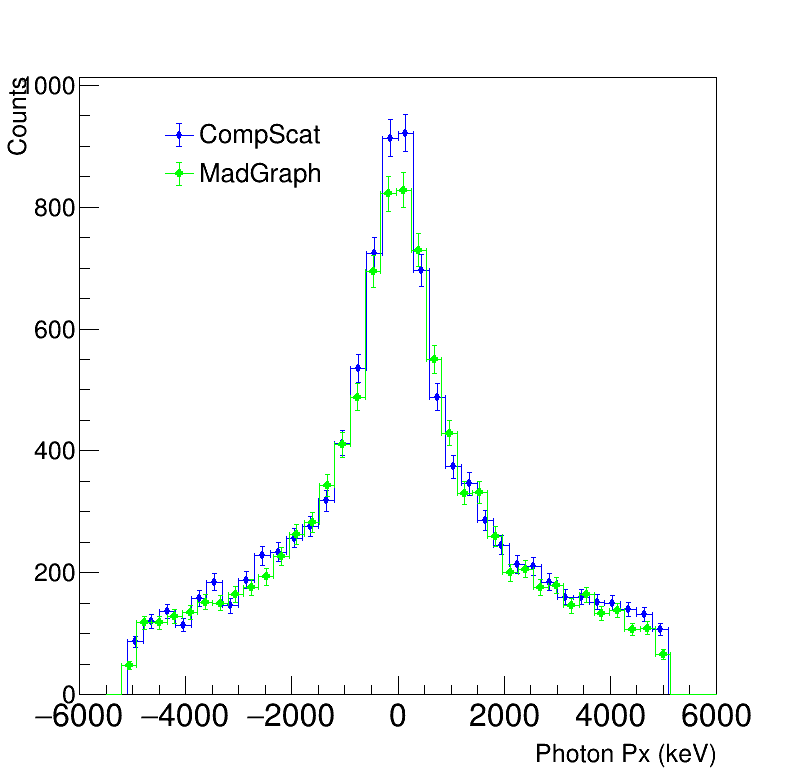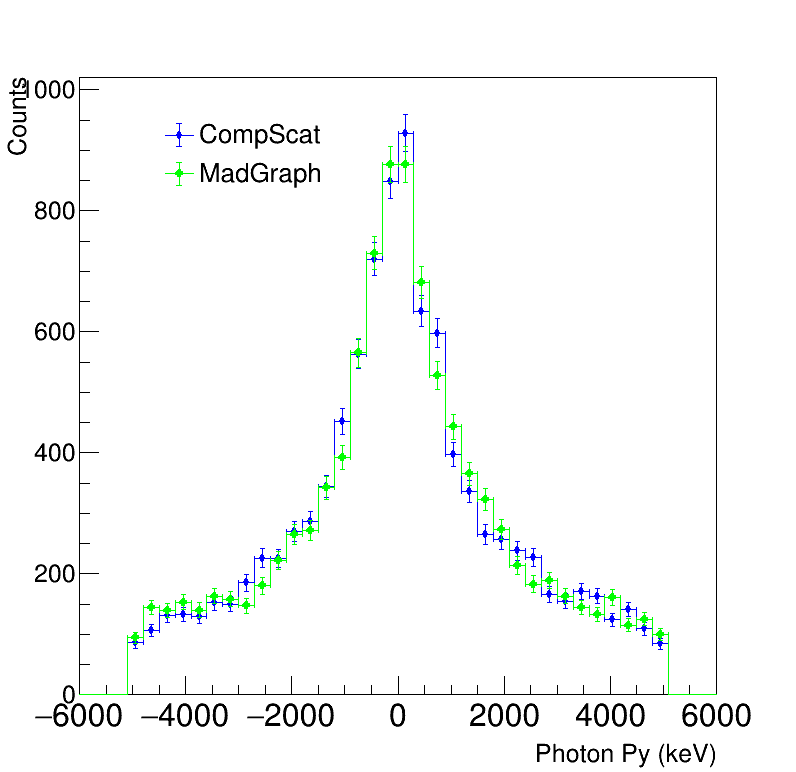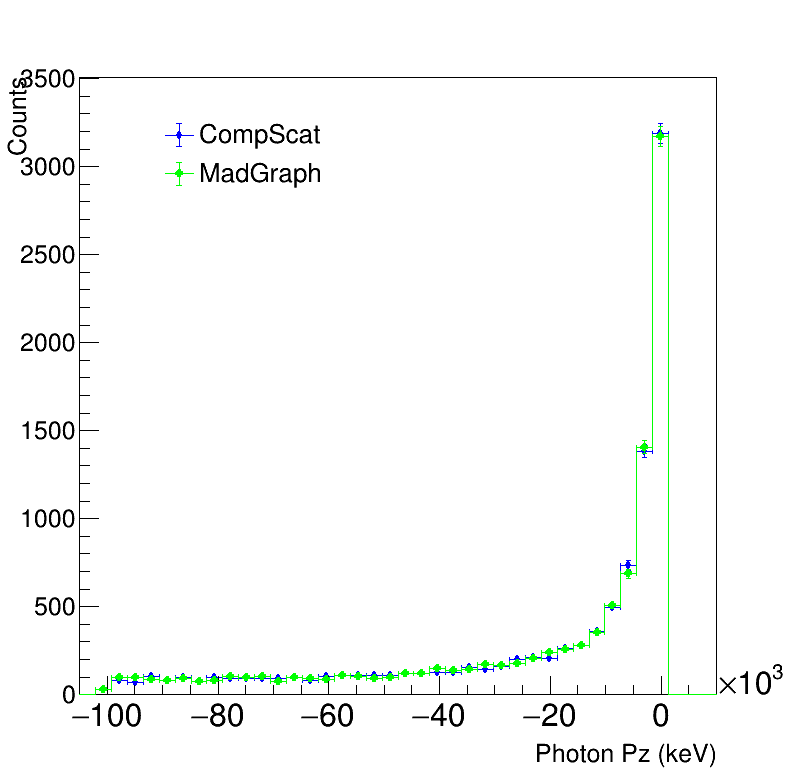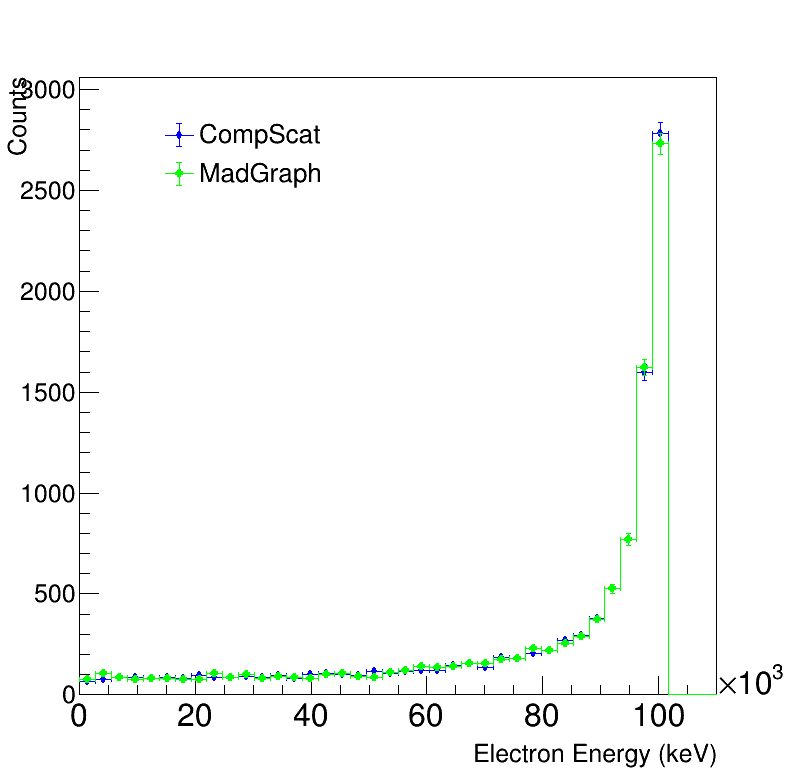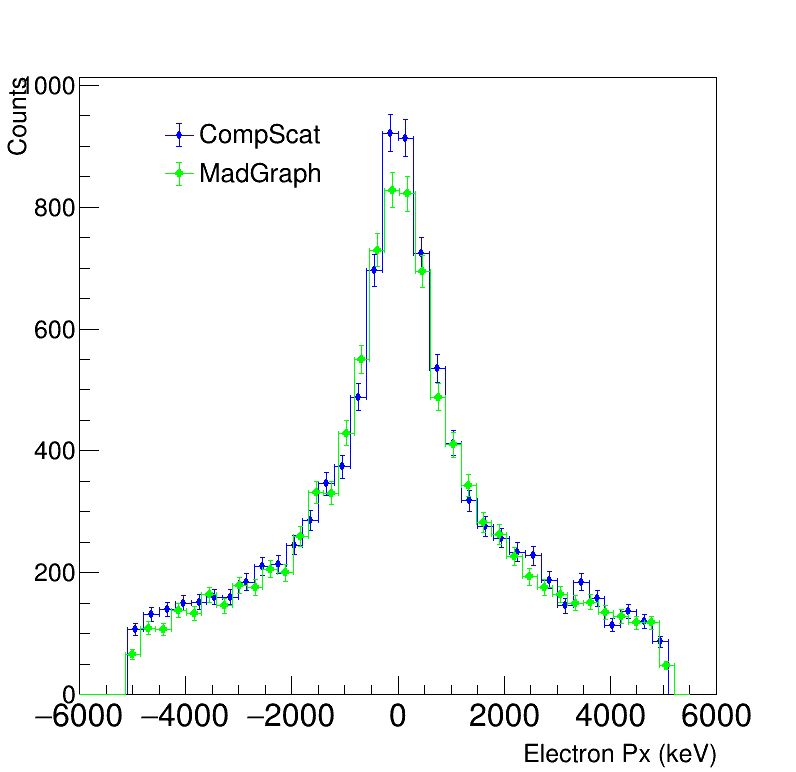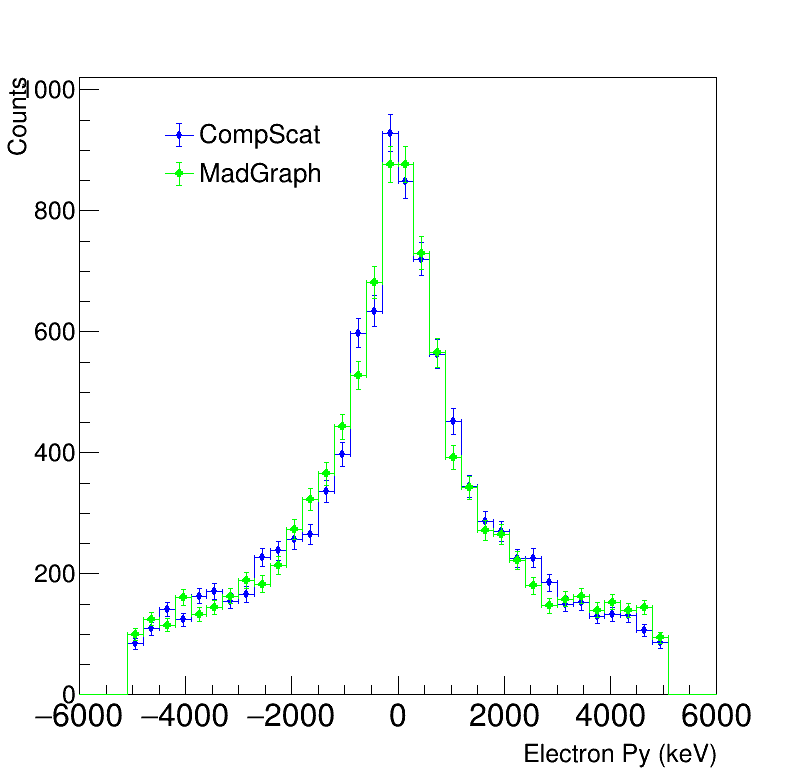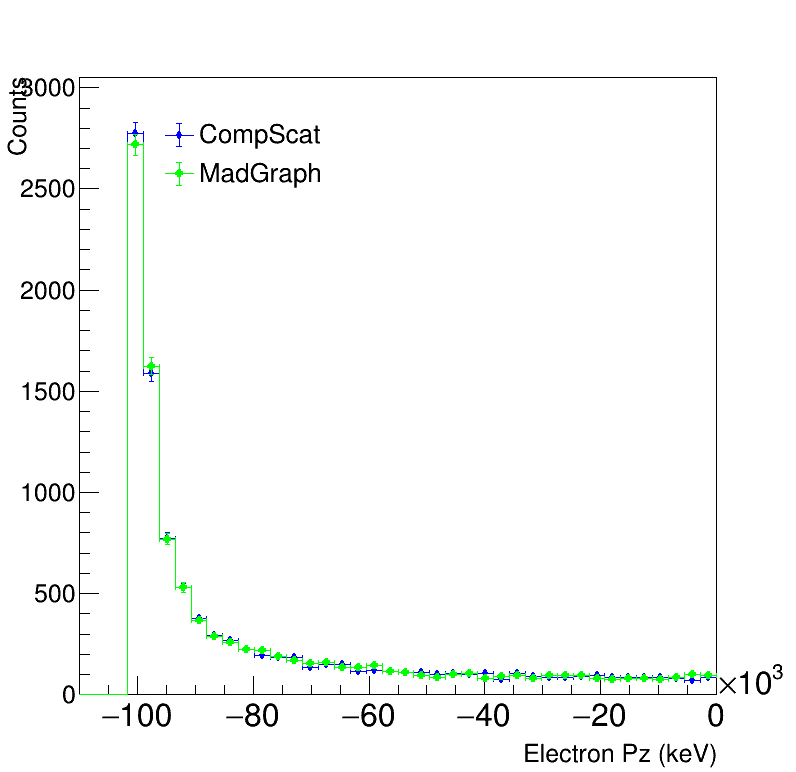Aman Desai
Monte Carlo simulation of fixed-target Compton scattering. The study has been compared with Madgraph5amc_NLO MC event generator. The full analysis can be found here Link. The analysis is currently done in C++ (ROOT Framework). To analyse the Madgraph LHE file, an LHE reader deverloped here is used.
Representative Feynman diagrams for compton scattering
The following plots compare the final states for CompScat with the Madgraph5amc_NLO final states.
Evaluated using
Plot showing the cross section versus energy (with error bars):
| Initial Photon Energy | CompScat |
Madgraph |
|---|---|---|
| 50 MeV | 15.585 |
15.57 |
| 100 MeV | 8.783 |
8.799 |
| 200 MeV | 4.857 |
4.87 |
| 300 MeV | 3.414 |
3.43 |
| 400 MeV | 2.669 |
2.664 |
| 500 MeV | 2.194 |
2.203 |
In the following, the initial photon energy is set to 0.1 GeV (electron is at rest).
Use:
pip install compscator to install from the latest branch use:
git clone https://github.com/amanmdesai/compscat.git
cd compscat
pip install .Description of the example in notebooks:
To import the library use
from compscat import CrossSection, SaveEvent,constants,PlotDataand then set the energy of the incoming photon in MeV:
E = 0.1The step below is the crucial step as the Cross Section is evaluated here. Only the energy is passed as an argument.
w_sum, w_square, w_max = CrossSection(
E / constants.m
).integrate_xsec()The script below will generate the events according to the w_max obtained above and Energy specified by the user. Moreover, the below class will also save the events (either as root or in a csv file). To save in root format use:
SaveEvent(10000, w_max, E).to_root()else to save them in a csv file use:
SaveEvent(10000, w_max, E).to_csv()Finally the scripts below will plot the data and store it as pdf. If you have saved the events in a root format use:
PlotData.file("MC_compton.root")else if you are using csv file, use:
PlotData.file("MC_compton.csv")See the notebook 'cross-section.ipynb'
-
Evaluate the cross section of compton scattering using the
CrossSectionmodule for different initial proton energies. Plot the same. -
Study the final states at different energies and plot them on the same plot.
-
Find the angles
$\phi$ and$\theta$ of scattering. -
Make a 2D plot of the energy of photon/electron with the angle of scattering (
$\phi$ and$\theta$ ).
We would like to thank Dr. Olivier Mattelaer (UCLouvain, Belgium), whose suggestion on applying cuts in the Madgraph configuration file was helpful in validation of the final states predicted by the CompScat package. We are grateful to Dr. Kilian Lieret (Princeton University, USA), whose suggestion to me about pre-commit config/python packaging (cookiecutter) was helpful in the overall formatting/structuring of the python package.
- For physics involved in the calculation, see for example, Introduction to Elementary Particles, David Griffiths.
- For monte carlo techniques: Statistical data analysis, Glen Cowan, 1998.
- For the equations used by the simulator see for example, Link
- Also see: Papaefstathiou, A. How-to: write a parton-level Monte Carlo particle physics event generator. Eur. Phys. J. Plus 135, 497 (2020).
- Alwall, J. and others, The automated computation of tree-level and next-to-leading order differential cross sections, and their matching to parton shower simulations.




